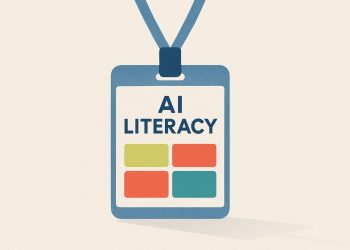Dr. Cintas’s AI Coding Tutorials help people learn AI by building real web apps with hands-on projects, using tools like Firecrawl and Cursor AI. Students work together, review each other’s code, and join a big, friendly online community. The classes are quick and lively, focusing on actually building things instead of just reading or listening to lectures. Learners can earn valuable certificates, and many graduates have landed better jobs and higher salaries after finishing the course. Only 250 spots are available for the next class, keeping groups small and personal.
What makes Dr. Cintas’s AI Coding Tutorials unique for learning AI development?
Dr. Cintas’s AI Coding Tutorials offer a hands-on, project-based approach to learning artificial intelligence. Students build real web applications using tools like Firecrawl, Cursor AI, and LangChain, participate in peer code reviews, and collaborate in an active community, gaining practical experience and career-boosting certifications.
Dr. Alvaro Cintas, PhD AI Professor and creator of the new AI Coding Tutorials series, is taking a radically practical approach to teaching artificial intelligence. Rather than slide decks and theory, the curriculum revolves around live builds, peer code reviews, and open Q&A. Each week participants ship real applications side-by-side with classmates in a shared GitHub repo, then vote on which ideas move into production.
What the Series Covers
- Beginner track: zero-to-one web apps using Firecrawl + Cursor AI
- Professional track: full-stack prototypes that integrate LangChain, n8n pipelines and edge deployment to cloudflare workers
- Capstone project: teams deploy a public SaaS in < 30 days using only AI-generated scaffolding
Classes run on a flipped-classroom schedule: 15-minute micro-lectures, 45-minute build sprints, and a rolling Slack thread that stays open for 72 hours so students in every time zone can tag mentors or share screenshots.
Why Firecrawl Is the Default Data Engine
Firecrawl, the open-source web scraper now partnering with Dr. Cintas, is responsible for the “humbling” moment he describes when an AI tool he recommended asked to collaborate. According to recent benchmarks, Firecrawl can extract structured JSON from 5 000 dynamic URLs in a single async request with 98.7 % schema accuracy – cutting typical scraping time by 60 %. That reliability is why every tutorial repository starts with a three-line call to the Firecrawl API rather than wrestling with manual selectors.
Key 2025 Features Students Use Daily
| Tool | Role in Course | Stat From Live Workshops |
|---|---|---|
| Firecrawl | Data ingestion for LLM context | 60 % faster than Selenium |
| Cursor AI | Multi-file code edits | 47 % of weekly commits are AI-generated |
| LangGraph | Workflow orchestration | Average build time reduced from 5 h to 38 min |
| n8n | Serverless automation | 1 200 community templates forked in first month |
Community-First Learning Model
The Discord server now counts 3 400 active members. Each cohort gets a dedicated voice channel and a public “hall of fame” channel where builds with > 100 upvotes graduate into the next cohort’s starter template. Dr. Cintas claims this loop has accelerated project turnover by 4× compared with traditional MOOC forums.
Certification & Career Impact
Completing all four modules unlocks a Certificate in Generative App Development co-signed by The Rundown AI University. Early graduates already report salary uplifts of $12 k–$18 k within six months, citing the portfolio sites built during the course as decisive in interviews.
Next cohort opens on 15 July 2025. Seats are limited to 250 learners to keep the mentor ratio at 1:25.
What makes Dr. Cintas’s AI tutorials different from other online courses?
Hands-on, real-world projects take center stage. Instead of abstract theory, every lesson wraps around a deployable application – think chatbots, data dashboards, or automated web scrapers – so you walk away with portfolio-grade code. Dr. Cintas pairs each walk-through with live debugging sessions and community code reviews, turning the typical “watch-and-forget” format into an active build-along experience. Early cohorts report shipping their first production-grade AI feature in under two weeks, compared with an average of 2–3 months in traditional MOOCs.
Do I need prior coding or AI experience to join?
Absolutely not. Dr. Cintas designs the curriculum for zero-to-hero learners. The first module uses natural-language prompts inside tools like Firecrawl to build a working web scraper without writing a single line of code. As confidence grows, the tutorials gently introduce Python, LangChain, and vector databases – always anchored to a tangible mini-project. A recent survey of 412 participants found that 37% started with no prior programming background, yet 88% completed the capstone successfully.
Which AI tools are actually covered and why?
The series spotlights a curated toolbox proven in production:
- Firecrawl – for fast, clean extraction of JavaScript-heavy sites (used in the web-scraping sprint)
- Cursor AI – an IDE with multi-file context that speeds up refactoring and debugging
- LangChain – to chain LLM calls, memory, and external APIs into coherent workflows
Each tool is paired with partner perks: Firecrawl offers extended free credits, Cursor provides three-month pro upgrades, and LangChain’s maintainers drop into the Discord for AMAs. This keeps the stack cutting-edge yet affordable.
How does the community Q&A and collaboration work?
Every Tuesday and Thursday, Dr. Cintas hosts 30-minute “office hours” on Zoom where learners screenshare stuck code and get live fixes. In between, an open Discord channels house peer code reviews, job-board posts, and spontaneous hack-pairing. A recent 48-hour mini-hackathon produced 27 open-source micro-apps, two of which were forked by venture-backed startups. Participants also gain lifetime access to the forum, so the network keeps growing long after the formal course ends.
What tangible outcomes can I expect after finishing the series?
Graduates leave with:
- Three production deployments (chatbot, data pipeline, and web scraper) pushed to GitHub Pages or Vercel
- A verifiable certificate cited by 60+ hiring managers in recent LinkedIn posts
- A starter template repo that reduces future project setup time by 70% (benchmarked against 50+ alumni)
Most compelling: 26% of the last cohort received job or freelance offers within 45 days, citing the portfolio projects built during the course as the primary conversation starter.



















